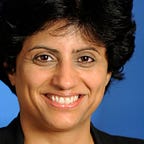I’ve got 99 problems, but a VC ain’t one.
Creative autonomy over capital.
“If you don’t take money, they can’t tell you what to do, kid…Money’s the cheapest thing. Liberty, freedom is the most expensive.” — Bill Cunningham
In my first startup, we did the venture-capital thing. We hauled our pitches into venture-capital firm after firm. We sat, awe-struck, around giant conference-room tables at intimidating rock-star VCs. I learned the language. I learned to say, “We’re looking to raise 5,” in a nonchalant tone (I mean, when everyone in the room is thinking in millions, the suffix is useless). The leather seats, the walnut tables, the glass-fronted offices, the coffee tables laden with the right magazines, the high-end artwork, the plush carpets, the walls oozing with pictures of success stories and awards, the legendary names on the roster, and the hushed silence of capitalism at work — we were smitten. We gawked at the number of comma-separated zeros, in the bets that these firms were willing to make on us. We hugged multi-million-dollar term sheets like they were our first-borns. We lapped up the gushing congratulations that accompanied our “Look, Ma, I raised a round,” news.
It was giddy at first. It felt like validation. I felt like I’d won the lottery. With a VC backing us, we could now strut with the swagger of a legitimate startup. I felt like an entrepreneur.
But, underneath, something ate away at me. It bothered me that the public badge of honor was how much debt (venture capital) we racked up, and not how much sales we made. Shouldn’t a company be about sales first? About shipping a product that sold first? Why was everyone high-fiving us for the debt that we had racked up, instead of being apprehensive that we were yet to close a sale?
So, I played it a little different with YinzCam.
I decided to bootstrap. I decided we’d go “sales or bust.”
I chased sales, not capital. Organic sales.
I wanted a product that would sell itself.
I wanted a product that customers would tell each other about.
It didn’t hurt that I was the first customer. I built YinzCam as a sports fan, and I built what I wanted — for me. I asked other fans what they thought. I would find an empty seat at the old Mellon Arena, pull out the product and start using it in the middle of a Pittsburgh Penguins game. The inevitable happened. The 5 curious Penguins fans sitting around my seat would peer over my shoulder to ask me what I was doing. I got them using the product, and I asked them to tell me what they loved and hated. I knew I’d get the truth — sports fans have a vocal kinship, and are unflinching in their opinions. Job done, I’d get up, go find another empty seat in the arena, and start all over again with a new group of 5 fans. My seat-hopping probably drove the arena staff nuts every Penguins game night.
It was a simple strategy. I asked the market what the market wanted from our product. I asked others sports fans to tell us what to build. I started with the fan’s voice first and worked backwards to product. That meant that I could chase whatever product I believed the market desired (and that I, as a fan myself, wanted), sell that product with utter conviction, solve whatever problem I fell in love with as a fan, scale or squash product ideas based on my gut instinct, and employ whatever growth strategy I chose.
I ignored raising capital. I ignored writing a business plan. I ignored building out an executive team. I ignored marketing. I ignored making up wild sales projections. I focused my time on five things: product, sales, people, users, and genuine, deep relationships with customers. I chased pilot deployments. I chased good engineering. I chased user feedback. I replied to users’ emails with goosebumps and gratitude — wow, they used something we built! I hired intelligent, ambitious junior people, and set no cap on their ambition or their career trajectory. I walked into every sale as myself, warts and all, with zero industry background, but able to explain every inch of our product in gory detail.
When I needed advice, when I was torn, or when I made mistakes, I went to the people whose voices I trusted more than my own — our customers — my teachers, my coaches, my rock. I sought their input on our business model. I sought their guidance to how to scale in an industry that I knew little about. I sought their forgiveness when I screwed up. I put our roadmap in their hands, and let them drive. Loving them and serving them were the reason I got out of bed every day. To this day.
I built a company with complete creative autonomy.
A VC would probably have fired me. Good thing we didn’t try to land one.
My rationale was simple.
If the product was good, we’d have happy users.
If the product was good, we’d land a first customer.
If the product was good, the first happy customer would tell a second.
If the product was good, we’d have more happy customers.
If the product was good, our customers would own our evolution.
If the product was good, we’d still be around.
That was 14 years ago.
And, yup, we’re still around. 👋
